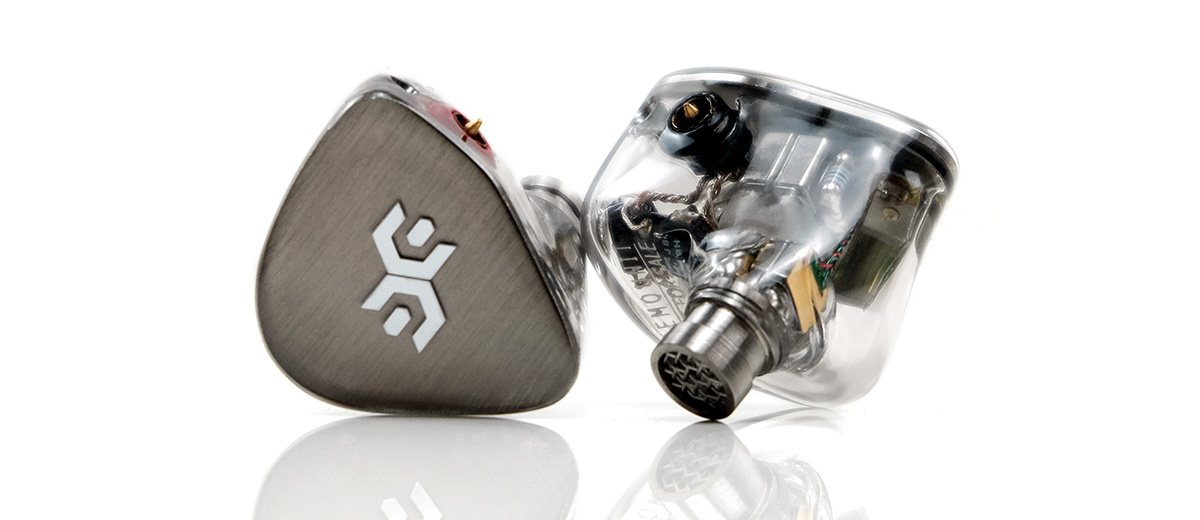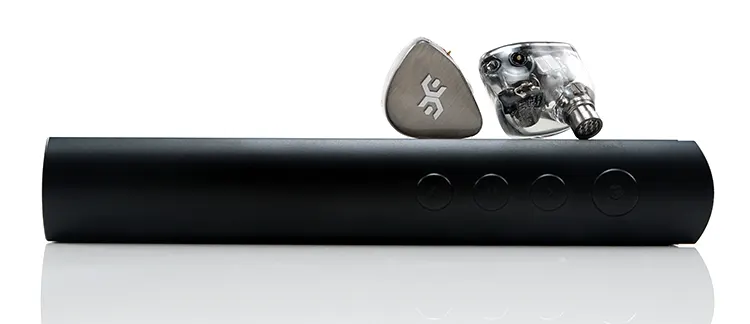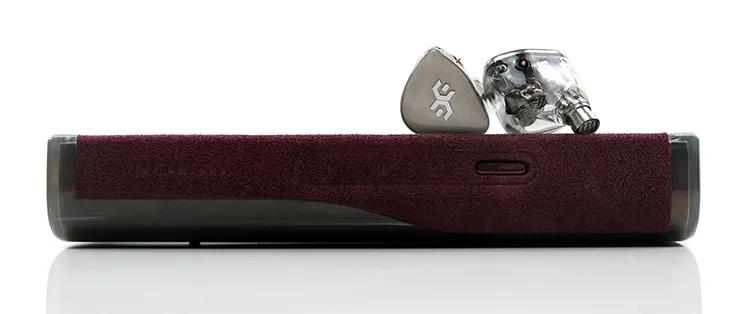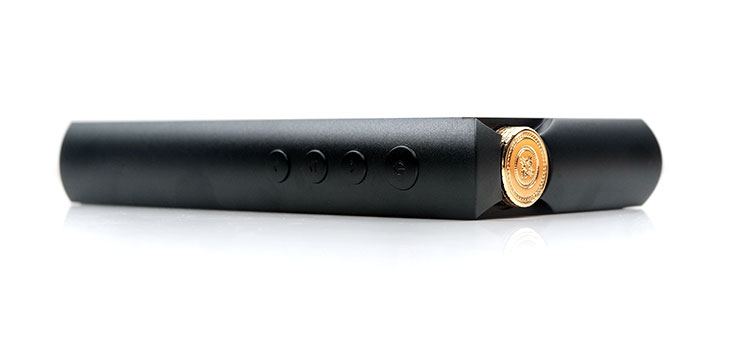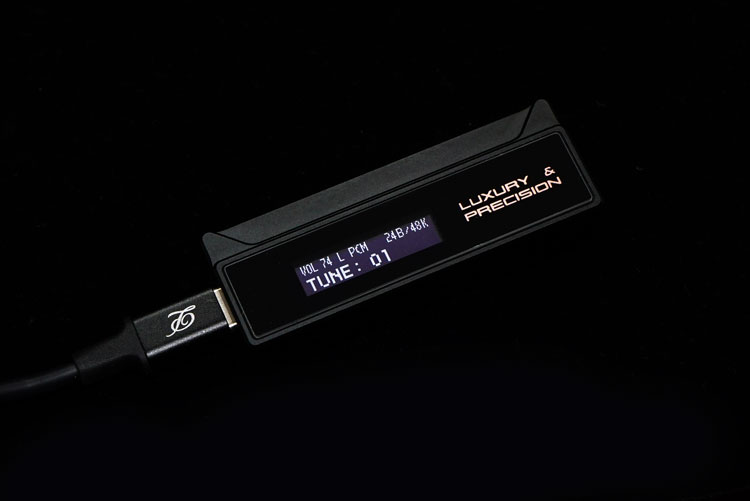Sound Impressions
The following sound impressions of the Elysian Acoustic Labs Annihilator 2023 were completed using a mixture of the HiBy R8 II, the Cayin N7, and the Luxury & Precision W2 as both source and amplification.
Summary
The Annihilator 2023 is tuned to both excite and inform the listener with an exuberant tuning mixed with some outstanding technical capability.
It digs deep with some heavyweight sub-bass presence, pushes forward with some excellent higher-pitching vocal clarity, and extends beautifully with a coherent mix of BA and EST for the highs.
The funny thing is when testing this at CanJam Singapore 2023 10 months ago I came away thinking this is all top and bottom and not much in-between. A grandiose offering with excellent resolution but perhaps a bit peaky for neutral sources.
How wrong was I after spending many hours listening to it over the last few weeks? A lot it seems which is a warning never to bank on aural memory for feedback on sound.
The Annihilator 2023 has a very agreeable timbral coloration and one I just wish other top-tier IEMs could achieve whilst retaining that flagship resolution.
It’s not too bloated on the lows, not too thin through the mids, and the treble, whilst not thick or lush, has that clarity and speed to remind you at all times of how a well-tuned EST tweeter setup can deliver the goods without sounding forced.
It has a few caveats though that prevent it from running away with the accolades but they are subtle and preferential rather than obvious.
These would include a slightly flabby mid-bass punch bested by the likes of the FiR Audio Radon 6 and not quite the same staging expanse and separation as the Noble Audio Viking Ragnar but these are more about preferences than outright negatives.
Otherwise, those who crave energetic lows, excellent headroom combined with a strong vocal focus, and a nicely balanced tonal quality will jump all over the Annihilator 2023.
Frequency Response
Some aspects of the Annihilator 2023 are ‘Harman correct’ so to speak with a 1-4k uplift to neutral that sits further forward bringing vocals to the fore.
However, beyond that, the Annihilator goes its own way with a very high amplitude for its dynamic driver peaking at 20-50Hz and staying above neutral with a slow drop to around 300Hz where it’s as close as neutral as possible.
From 300hz to 1k it slips slightly below neutral so instruments will sit back just a tiny bit behind both the bass and higher-pitching vocal performers when called upon.
Chest and lower pitching vocals in general sit within this picket also sounding slightly diminished in weight and presence relative to mixed and head voice pitches though the clarity is still excellent.
There is a peak around 4-5k which is the strongest band in the entire FR and the area most likely to pick up a lot of the energetic treble overtones.
Percussion, gently xylophone notes, and tambourine will resonate with a slightly ethereal quality but note, that the 5-7k range is lower so it’s not a brash edgy tone but rather a nice layer of sheen on top. It’s a very refined tuning to maximize clarity without sounding too thin or sharp.
From about 8k onwards and I mean well beyond 10k, the EST drivers have a nice lift driving a lot of that subtle sparkle on the very highest register and giving the Annihilator 2023 some impressive headroom and air.
Timbre
Now this is the part that surprised me the most. Not so much that it might be a bright-sounding monitor but rather my listening impressions at CanJam last year imprinted the word ‘edgy’ on my mind post-event which is not the case at all.
The Annihilator 2023 has a clean but very nicely controlled tonal quality that avoids sounding shrill, overly lean, or too bloated on the lows. It straddles a fine line between neutral to ethereal on one end to fulsome and powerful on the other.
To give you some context, the Annihilator 2023 is warmer and more embracing compared to the strident treble-heavy overtones of the Viking Rangar, but brighter and cleaner sounding than either the Vision Ears VE10 or the FiR Audio Radon 6.
You will get a very powerful and slightly warm bass response that does wonders for lower-register fundamentals but note, that it’s not quite as dense and hard-hitting on the mid-bass compared to the Radon 6 Kinetic Bass driver.
There is a little bit of bloom peaking in from the upper bass also but it’s not overdone, just not as tight as I would like it to be when trying to pick out deeper-register vocal performances.
Mids timbre is sweet sounding to clean and ethereal through the upper-mids and gorgeous highs but this can vary slightly depending on the source you use.
I find a warm or analog-sounding DAP such as the Cayin N7 or the HiBy FC6 dongle fattened up the mids and vocal nicely giving them some welcome texture and warmth.
DAPs such as the HiBy R8 II and the FiiO M17 sounded more precise and teased out the best treble performance but also sounded a little more digital sounding with a slightly leaner note weight through the mids.
Staging & Dynamics
The Annihilator 2023 projects a very tall and deep staging quality combined with a mid-forward presence. The overall articulation and transient speed are excellent as is the dynamic range.
Particularly so on the highs which are like lighting and deliver one of the most crystal clear and convincing and electrostatic performances I have heard to date from a tribrid IEM.
The lows are forward, particularly so for the sub-bass when called upon though the mid-bass slam is softer than I expected it would be and secondary to the rumble from below.
Mids are generally forward though with a slight bias to the upper-mids so higher-register vocals sit further forward than typical male chest vocal passages.
Vocal positioning is to the fore the higher up you go. The perception is more to the very front of the stage with instruments tucked in behind or further away compared to the likes of the Radon 6 which has both vocal and instrument closer together on the stage.
When the bass is at full tilt it can overshadow some of those lower-register vocals which is where I start fiddling with operational modes on my source just to tone it down a little and give the lower mids a bit more space to breathe and make their presence felt.
Synergy
Efficiency & Sensitivity
The Elysian Acoustic Labs Annihilator 2023 has a sensitivity rating of 94 dB @100mV @1khz with a load of 22Ω @ 1khz. That makes it one of the less sensitive hybrid IEMs out there in the market today, even when compared to monitors that have a similar tribrid configuration.
For example, the Noble Audio Viking Ragnar uses quad-EST and dual-dynamic drivers for the highs and lows yet still has a relatively moderate 112 dB sensitivity @1Khz rating.
That does translate into a fairly noticeable gap in volume level matching with the Annihilator 2023 requiring almost 20 steps more in a low gain mode using the HiBy R8 II’s balanced 4.4mm output.
However, to start thinking about using powerful amps or dedicated portable amplifiers would be taking it a step too far.
Whilst the sensitivity gap is noticeable you can still drive the Annihilator effectively on a low gain setting with a decent DAP or a good quality dongle on high gain such as the Cayin RU7 or the HiBy FC6.
DAP Pairings
I tested 3 DAPs including the FiiO M17, the Cayin N7, and the HiBy R8 II. Each was assessed using their balanced 4.4mm output and set to low gain mode.
The preference out of that lineup was not the one that delivered the most convincing bass performance but rather the most balanced mids and highs. For the bass, I tended to prefer a DAP that kept it well-defined and controlled rather than overcooked the Annihilator’s low-end presence.
On that basis, the R8 II and the N7 won out over the M17. The M17 delivered great bass but the definition was softer compared to the pairing with the R8 II. The Annihilator 2023 bass had more definition and a stronger mid-bass slam on dynamic peaks with the R8 II compared to the M17.
The vocal presence was good on both but beyond, the M17 sounded muted for percussion energy with the Annihilator. I felt the R8 II offered a better treble extension and got more out of those EST drivers.
The N7 delivered an airy soundstage but its vocal performance was the eye-catcher for me in Class A mode. In Class AB mode it sounded drier and more neutral in its delivery.
Class A gave the vocal presence a smoother tone and more bloom as well as enhanced the weight of the lows though it’s not as punchy as the R8 II.
Modes did play a role for all DAPs. Class A was the better choice when paired with the R8 II. It reduces some of the bass weight in favor of a smoother set of mids and highs which I found more to my liking.
The All-to-DSD mode on the M17 also teased out a more refined set of mids and highs with the Annihilator 2023.
Dongle Pairings
Four dongles were tested including Cayin’s RU7 and the R-2R RU6, as well as Luxury & Precision W2, and the HiBy FC6.
I felt the best all-rounder was the W2, followed by the RU7 with the FC6 playing harder to its bass and vocal strengths giving the Annihilator 2023 the most ‘fun’ sounding response.
The W2 did best for mid-bass punch and vocal separation with the liveliest sound signature from top to bottom.
That includes treble sparkle which the FC6 did less well with the Annihilator 2023. With the HiBy dongle, it’s more about vocal richness and bass weight so your ear is moving downwards creating a more intimate and weighty performance.
The RU7 will give you a natural tonal signature with the most holographic soundstage but I felt the neutral vocal imaging played less well to the Annihilator 2023’s stronger mids lift.
I would use this pairing if I wanted a more relaxed expansive presentation but for higher levels of energy and focus, I preferred the W2.
The RU6 sounded strange with the Annihilator 2023. It seemed to lose a lot of bass weight and presence, more so than I was expecting. Instead, you have lots of vocal presence with euphonic coloration and decent highs but overall, an unbalanced pairing for my preferences.

